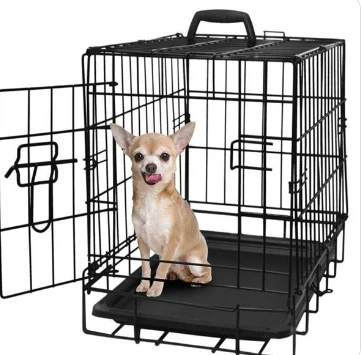
Nov . 14, 2024 19:13 Back to list
installing a field fence
Installing a Field Fence A Comprehensive Guide
Installing a field fence can be a rewarding project for anyone looking to delineate land, contain livestock, or enhance privacy. Whether you are a seasoned DIY enthusiast or a first-time homeowner, this article will guide you through the steps necessary to successfully install a field fence.
Step 1 Planning and Preparation
Before you begin, it’s crucial to have a plan in place. Start by assessing the area where you want to install the fence. Consider the purpose of the fence—whether for livestock containment, marking property lines, or for aesthetic purposes. Based on these factors, determine the type of fence you will install. Common types of field fences include woven wire, barbed wire, and high-tensile fencing.
Next, check local zoning laws and regulations concerning fence installation, as some areas have specific rules about heights, materials, and placement. Once you have all the necessary information, draw a rough map of your property and the intended fence layout, including gates or openings if necessary.
Step 2 Gathering Materials and Tools
You’ll need a variety of materials and tools to complete your field fence project. Common materials include
- Fence posts (wooden or metal) - Fencing wire (barbed, woven, or high-tensile) - Fence rails (if applicable) - Concrete mix (for setting posts) - Gate hardware (if including a gate)
As for tools, gather the following
- Post hole digger or auger - Level - Tape measure - Wire cutters - Hammer - Safety glasses and gloves
Once you have all your materials and tools, you are ready to move on to installation.
Step 3 Installing the Fence Posts
installing a field fence

The first step in the installation process is setting the fence posts. Begin by marking the locations for the posts based on your fencing plan. Standard spacing for fence posts is typically 8 to 12 feet apart, depending on your fencing type.
Using your post hole digger or auger, dig holes at least 24 to 36 inches deep to ensure stability. Place a fence post in each hole, making sure it’s vertical and level. To secure the post, add concrete mix around the base and allow it to cure according to the manufacturer's instructions. This may take a few days, so plan accordingly.
Step 4 Attaching the Fencing Material
Once your posts are set and the concrete has cured, it’s time to attach the fencing material. If you’re using woven wire, unroll the wire along the length of the fence, and start at one end. Attach the wire to the first post using fencing staples or wire ties, ensuring it’s taut as you move to the next post.
For barbed wire, start by running the first strand at the desired height, typically 30 inches for livestock. As you add additional strands, keep them evenly spaced and taut. High-tensile fencing requires a similar process, but may require special insulators to connect the wire to the posts without causing shorts.
Step 5 Adding Gates and Final Touches
If your field fence design includes a gate, now is the time to install it. Make sure the gate is level and swings freely, allowing easy access to your property. Use sturdy gate hardware to ensure it can withstand pressure from animals or wind.
Finally, walk along the entire length of the fence to check for any loose areas or adjustments that may need to be made. Ensure that all wire is secure, and there are no gaps that could allow animals to escape or intruders to enter.
Step 6 Maintenance and Care
Once your field fence is installed, regular maintenance is vital to ensure its longevity. Periodically inspect the fence for wear and tear, including loose wires, broken posts, or rust. Trim back vegetation that may encroach on the fence line, and repaint or refinish wooden posts as needed to protect them from the elements.
In conclusion, while installing a field fence requires careful planning and hard work, it can provide long-lasting benefits for your property. By following these steps, you’ll create a secure and functional boundary that enhances your land’s usability and aesthetic appeal. Happy fencing!
-
Why a Chain Link Fence is the Right Choice
NewsJul.09,2025
-
Upgrade Your Fencing with High-Quality Coated Chicken Wire
NewsJul.09,2025
-
The Power of Fence Post Spikes
NewsJul.09,2025
-
The Best Pet Enclosures for Every Need
NewsJul.09,2025
-
Secure Your Property with Premium Barbed Wire Solutions
NewsJul.09,2025
-
Enhance Your Construction Projects with Quality Gabion Boxes
NewsJul.09,2025
Products categories











